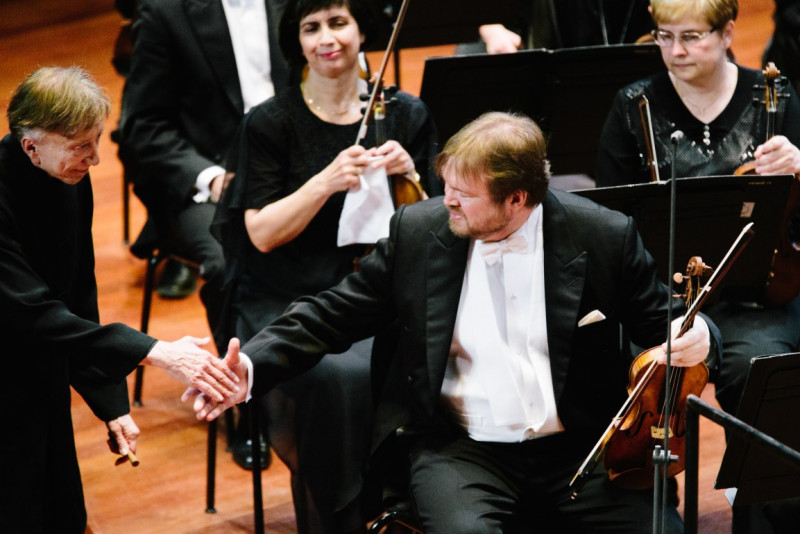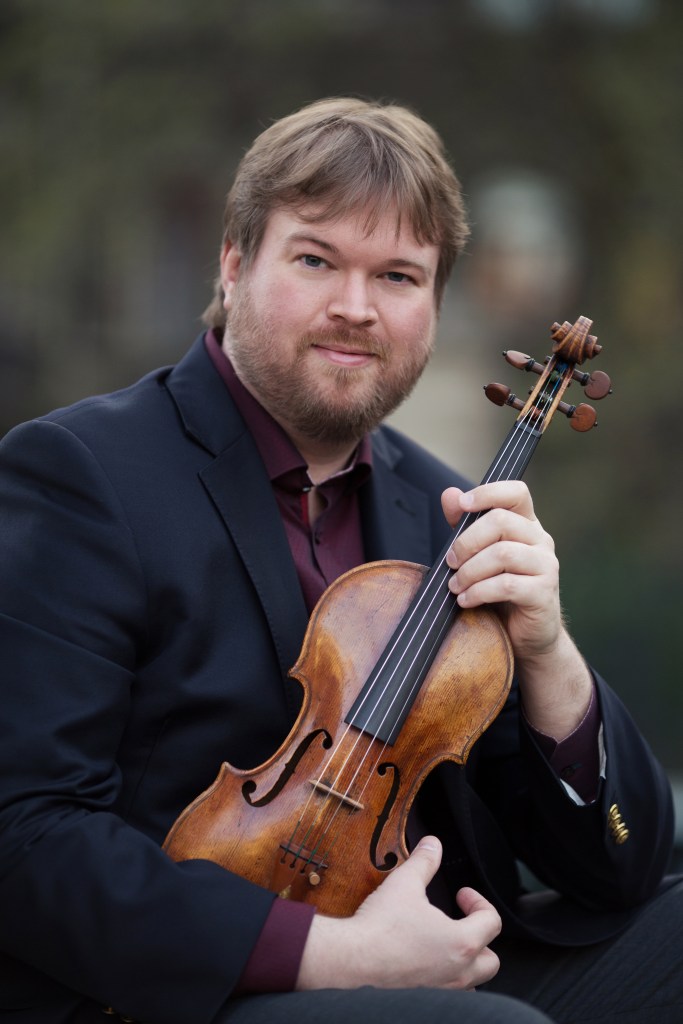“My main goal is to inspire my students towards a future in music” – Interview with Nathan Giem
The American violinist, a resident of Hungary for the past two years, started teaching at the Liszt Academy this semester. In addition, he participates in Hungarian music life as a soloist, chamber musician, and concertmaster. We asked him about his goals in teaching as well as the challenges of sharing knowledge in the 21st century.
You are the first foreigner on the String Faculty! Please tell us, how does it feel to teach at the Liszt Academy?
This is my first year teaching at the Academy of Music and it means a lot to me that I can be here. The Liszt Academy has a historic tradition, and I was fortunate to study with more than one professor affiliated with its past. This goes back to Jenő Hubay’s musical and technical heritage, which among other things has greatly influenced my bow technique. I trust that I can pass on what I have learned while teaching at the Academy.
As an instructor, you are passing on not only the study material, but values and goals as well. What is the main path that you are leading your students on?
My main goal is to inspire my students towards a future in music. Of course, they have to master quite a bit of technical and theoretical knowledge, and after a while, become their own teachers, since I’m only helping them for a few years. As far as career goals go, I encourage them to find their own path. The Liszt Academy does a great job making this possible, as it is one of the outstanding institutions in Europe, and it provides an invaluable musical foundation for the students. What is also important for the students to understand, is that classical music is not only a question of knowledge and harmony, etc., but a shared culture as well. A student should be enthusiastic, and should be capable of sharing that with others. Likewise, he or she should be ready to respond to other musicians’ thoughts and ideas. This is the beginning of chamber music! On a related subject, I should mention my concept of “leading”. As a concertmaster and chamber musician, I never try to dictate, or to lead by “pulling” other musicians. First and foremost, I lead myself, and invite others to join. It’s their decision how they respond to the invitation! I try to encourage my students to have this attitude.

How do you see the Liszt Academy’s current generation of students, what is the key element in teaching them today?
Technology is more useful than ever for this generation! For example, there are many recordings of famous artists available online. Also, there are a lot of musical scores, exercises, and other methods to help develop technique on the internet. Technology is on their side. At the same time, it is a known fact that quality content in the virtual world is often overpowered by the quantity of less valuable material. I encourage students to use these resources as a supplement - they are only complementing “real world” learning.
I see that you are carrying a tablet along with your violin case. Based on that, would you say you are also using modern technology in your professional life and teaching?
Absolutely! I am using an iPad as a regular part of my performing and teaching life. It’s a great way to transport a lot of musical scores, and I also use it to record students during lessons. For example, I can make a slow-motion recording of a student’s left-hand finger placement. It is better than a mirror, because it shows their finger placement without any distortions of perspective, and shows very clearly any problems they may have, or technical solutions we may find. I find it unnecessary however, to put these types of videos on content sharing websites, such as YouTube, since it is almost impossible to improve violin playing through that medium without in-depth guidance from a mentor.

A lot of the students at the Liszt Academy choose to play string instruments. Why do you think a string instrument is attractive for students?
Besides the beauty of the sound and the expressive possibilities? This has a simple answer: in an orchestra, there are more string players than any other instruments! Therefore, we can assume that there are more professional careers available to prospective string players; and not surprisingly, there are also more tutors for these students as well.
Why did you become a violinist?
I didn’t want to be a violinist, as much as to play music, which happened to be written for the violin. In other words, a musician - a mindset I try to convey to my students as well. But it’s true that when I was a small child and my mother wanted me to play the piano, I reacted strongly against it, because I was more attracted to the sound of the violin! Later, of course, I learned to play the viola and piano, and even had some fleeting experiences with the double-bass. In my opinion every violinist should grasp the concept of how to play the double-bass, in order to have a better understanding of tone production.
If we are talking about tone production, it’s worth it to mention that you have a deeper understanding about that, and have a connection to the Violin Society of America as well.
I am very interested in how the violin works. The VSA is comprised of not only interested musicians, but physicists, other scientists, and instrument makers, and we all seek to know what makes a good instrument. As a teacher, it is of great importance that a student has a suitable instrument. The works of the old Italian makers are admirable, but the availability of these instruments has greatly decreased in recent years. Current and future generations will have to discover – by necessity - great examples of instruments made in our own time. In this way, we can step forward with the future of our art.
Looking at your life it can be seen that you connect to music in multiple ways: as a chamber musician, teacher, concertmaster, soloist, and you also conduct sometimes. How can you manage all that?
Everything is linked. To be a conductor and a concertmaster means leading the orchestra. Chamber music is most fulfilling when everyone is leading! To teach students is also leading. I admit sometimes it can be challenging to manage schedule-wise, but every aspect has its place in my life. In the meantime, I continuously seek balance, since my family is the most important!
We can hear Nathan Giem performing next on January 23rd, 2019, in the Béla Bartók National Concert Hall, where he will perform the Brahms Violin Concerto as soloist with the Hungarian Radio Symphony Orchestra, conducted by Maestro Tamás Vásáry.
Anna Unger


